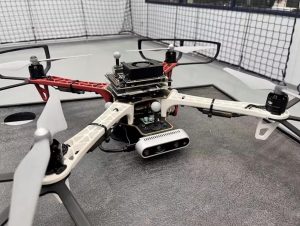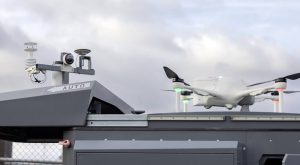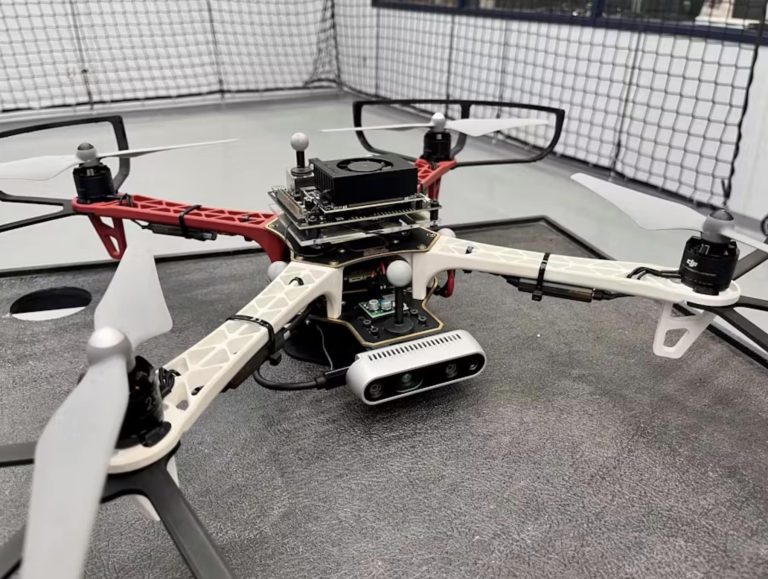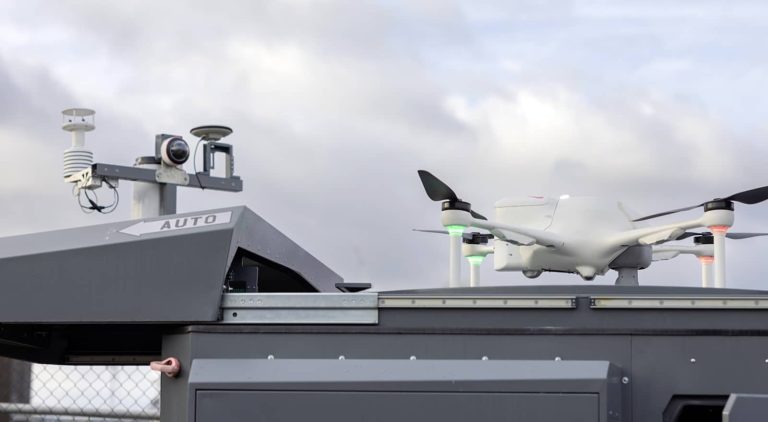On April 4, 2025, China‘s Ministry of Commerce (MOFCOM) ramped up its trade offensive against the United States, adding 11 US Drone Companies to its Unreliable Entity List, as reported by Global Times. This move, barring these firms from import/export activities with China and new investments in the country, positions drones as a central arena in the escalating US-China trade conflict.
Hat tip to long-time reader Keith!
Drone Firms Accused of Taiwan Ties
China cited “military technology cooperation with Taiwan” as the basis for the restrictions, alleging these companies undermine its sovereignty and security.
The 11 affected firms, detailed on MOFCOM’s official site, are:
- Skydio Inc. – Leader in autonomous drones for defense and public safety
- Brinc Drones, Inc. – Specializes in tactical and emergency response drones
- Red Six Solutions – Expert in counter-UAS systems and threat simulation
- SYNEXXUS, Inc. – Provides integrated defense technologies
- Firestorm Labs, Inc. – Builds cost-effective, adaptable UAS
- Kratos Unmanned Aerial Systems, Inc. – Supplies tactical drones and aerial targets
- HavocAI – Focuses on autonomous maritime operations
- Neros Technologies – Onshores drone production for defense
- Domo Tactical Communications – Offers critical communication solutions
- Rapid Flight LLC – Innovates in tactical drone manufacturing
- Insitu, Inc. – Boeing subsidiary producing military-grade uncrewed vehicles
Broader Export Controls Hit 16 US Entities
In a parallel action, MOFCOM added 16 US entities to its export control list, prohibiting them from accessing dual-use Chinese goods—items with civilian and military applications. This list, outlined in a separate announcement, includes:
- High Point Aerotechnologies
- Universal Logistics Holdings, Inc.
- Source Intelligence, Inc.
- Coalition For A Prosperous America
- Sierra Nevada Corporation
- Edge Autonomy Operations LLC
- Cyberlux Corporation
- Hudson Technologies Co.
- Saronic Technologies, Inc.
- Oceaneering International, Inc.
- Stick Rudder Enterprises LLC
- Cubic Corporation
- S3 AeroDefense
- TCOM, Limited Partnership
- TextOre
- ACT1 Federal
These firms, spanning aerospace, defense, and tech, face immediate supply chain challenges.
Tit-for-Tat Trade Moves
The restrictions follow President Trump’s April 2 imposition of a 34% tariff on all Chinese goods, raising the total US rate to 54% with existing 20% duties. China retaliated on April 4 with a matching 34% tariff on US goods, effective April 10, and banned exports of rare earth minerals—samarium, gadolinium, terbium, dysprosium, lutetium, scandium, and yttrium—to the US, per NPR. These materials, critical for tech manufacturing, heighten the economic stakes.
Drones in the Crosshairs
The 11 drone firms are key players in a US industry valued at $9.2 billion in 2024. Skydio drives defense contracts with autonomous systems, while BRINC taps a $2.5 billion public safety market. Kratos and Insitu meet military needs, where UAS are increasingly vital. China’s focus on dual-use innovators challenges US leadership against DJI’s 70% global market share. Supply chains, reliant on Chinese motors, sensors, and rare earths, face disruption despite efforts to onshore production after security-driven bans on Chinese drones.
Market and Technical Fallout
The ban cuts these firms off from China’s $15 billion drone market and its manufacturing base, potentially strengthening DJI’s dominance. Smaller players like Neros may pivot to domestic sourcing, but larger firms face costly retooling. The rare earth export ban hits hard—the US produces 43,000 tons annually versus China’s 240,000 tons, per USGS data—threatening drone electronics and batteries. Technologically, trade barriers may spawn parallel ecosystems, risking divergent standards and interoperability issues for global operators.
Regulatory Escalation: A Familiar Playbook
China’s Unreliable Entity List, launched in 2020 as a counter to the US Entity List, has grown steadily. In May 2024, it targeted three US defense giants over Taiwan arms sales, followed by 28 more in January 2025. The export control list, expanded in 2024, now covers over 40 US firms. This mirrors US moves, like the March 25, 2025, addition of 80+ Chinese firms to its Entity List, targeting tech and military advancements. Drones, pivotal in modern conflicts, are a prime focus in this regulatory showdown.
Infrastructure Challenges Ahead
US drone production lacks the scale to quickly replace Chinese supply chains. Scaling domestic capacity for components and rare earths could cost billions and take years, straining budgets. Firms may lean on allies like Japan, but China’s manufacturing edge remains a hurdle.
A Sector at a Crossroads
China’s targeting of US drone firms marks a deepening technological divide, with unmanned systems as a critical front. Immediate supply chain shocks and long-term innovation risks loom, fueled by tensions over Taiwan. The US must fast-track resilient supply chains and alternative sourcing, but China’s entrenched position holds the upper hand for now.
DroneXL’s Take
This isn’t just retaliation—it’s a strategic strike to undermine US drone leadership. By targeting firms linked to Taiwan and cutting off key resources, China exploits vulnerabilities while reinforcing its global dominance. The US drone sector’s survival hinges on rapid, costly adaptation, but the odds favor Beijing’s entrenched advantage.
Discover more from DroneXL.co
Subscribe to get the latest posts sent to your email.





















+ There are no comments
Add yours